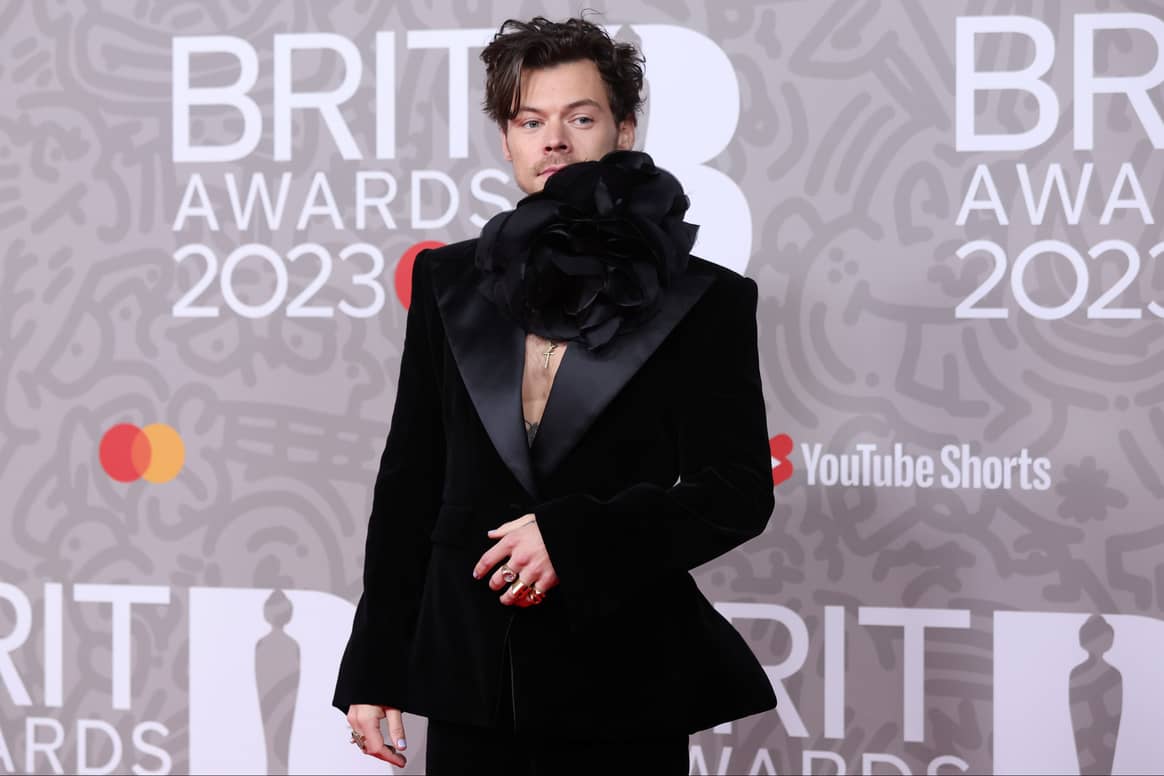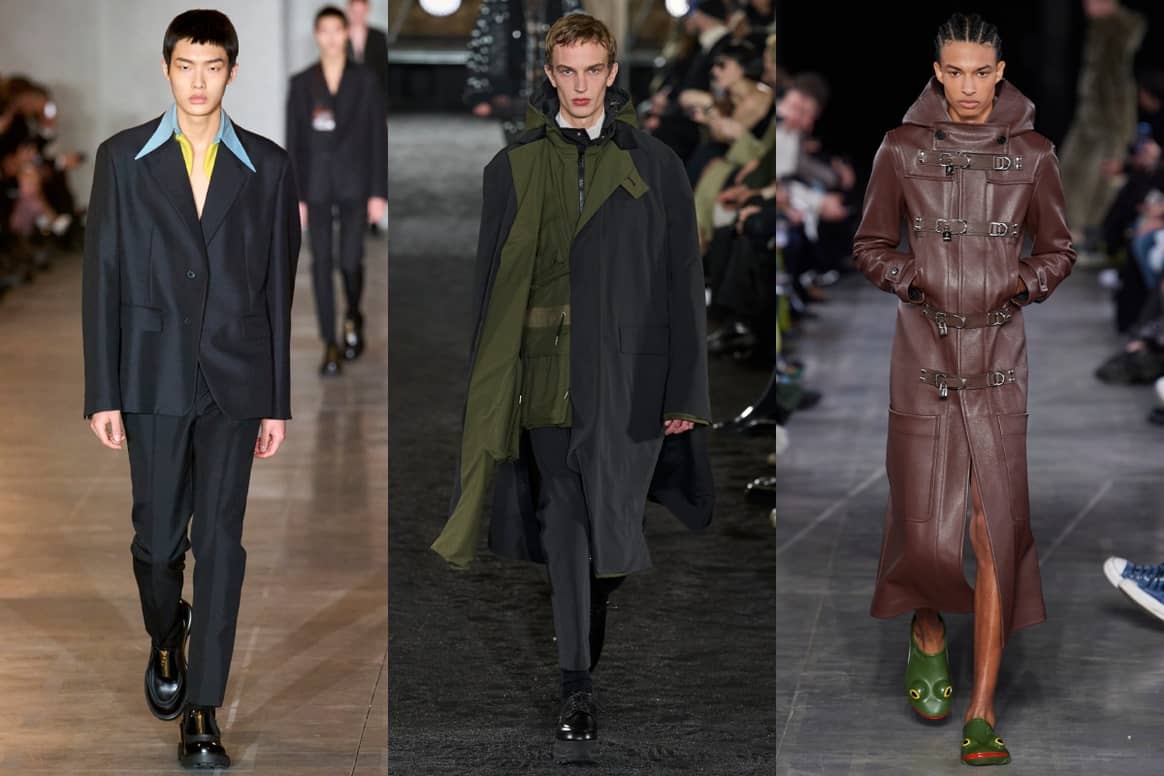Engaged in the clothing industry for 20 years.

Trend expert Julian Daynov: Menswear breaks free from standard normcore stigmas and uniformity
Fashion is in a constant state of flux and menswear, normally associated with classic and sporty looks, is no exception. So how is masculine fashion still defined at all in a time when role models like musician Harry Styles are shaping the style of a young generation? And where does that leave the ‘classic’ menswear consumer?
Trend expert Julian Daynov can shed light on those questions. Daynov, who lives and works in Berlin, has a wide range of experience in the fashion industry – he is a consultant for brands, a content creator, and a trend forecaster. He was also active as a buyer for US luxury department store Saks Fifth Avenue. FashionUnited met Daynov at menswear fair Pitti Uomo in Florence where he was presenting his current collaboration with Studio Seidensticker, the progressive line of the German clothing company.
Menswear is changing, but where is it heading?
It’s not just menswear, it’s fashion, society, the whole world. Breaking it down to menswear, though, to me most of that change originates in our modern interpretation of masculinity. We are breaking away from gender roles, old norms, and ancient beliefs when it comes to basically anything surrounding us. Change is our new wave.
The spectrum of contemporary menswear now has a fluid legacy and only underlines the features and qualities of modern men: brave but still gentle, bold yet still vulnerable, inspiring, sporty, chic, alternative, punky, expressive, caring, free of that default suited normcore stigma and patriarchal uniformity our parents were trapped in.
I somehow see liberation being a key concept and driving force in that context – menswear is noticeably heading towards lining out a more experimental playground, which was previously a privilege mostly for womenswear.
What observations did you make?
There is so much we are witnessing at the moment in menswear and all of it has its valid foundation – ultimate shape-shifting approach in dressing, a poetic and nostalgic longing for the 90’s, a farewell with hipster or hype-beast culture, and a whole new wave of icons and role models re-defining modern masculinity surrounding us.
What’s been profoundly set is outdated, and not only in the fashion sense of it – it is more of an ideological level of change we are experiencing here. And menswear only reflects it and adapts to it.
Who are these role models?
Harry Styles, Jared Leto, Troye Sivan – just to name a few. They are not only ambassadors of fashionability or trend awareness, they spread a new mindset and attitude towards being yourself.

At Studio Seidensticker, you yourself are developing a progressive approach for a traditional clothing company. How do these two movements coexist?
Studio Seidensticker as a diffusion line within the brand universe of the Seidensticker Group is focusing on putting together timeless, yet modern looks and curates a line-up of pieces which transcend classic categories, occasions and gender beliefs. It follows a contemporary approach and pairs it with the legacy and values of today: effortless garments, easy silhouettes, the highest quality of fabrics – and all produced with respect to nature and everyone within the production context.
Actually, it is exactly the coexistence of both parameters which makes the entire brand and the story behind so special and valuable – connecting tradition and modernity, heritage and zeitgeist, generations of craftsmanship and visionary creatives is a crucial part of the identity of this project and showcases how change and adaptivity are incremental for the growth, continuity, and validation of a business over multiple generations.
The craftsmanship and heritage probably also bring advantages?
Yes, a lot of young brands often struggle with a lack of profound expertise and knowledge in apparel construction, sourcing, and manufacturing. It makes it much easier to collaborate with someone who has paved the way in design and fabrication of any kind of shirting for over 100 years. It is exactly the combination of heritage, tradition, and know-how all paired with the desire for modernity and drive to interpret such a sacred and full-of-history piece of garment as a shirt and to place it into the context of our time.
And how was it for you to work with such a traditional clothing company?
My collaboration with the Seidensticker family happened very genuinely and out of our friendship and admiration for each other’s work. Together with creative director Marc Biggemann, who is definitely one of the most enriching overall aesthetes I have had the privilege to work with, we developed a capsule collection which reflects my personal style and is inspired by signature looks I found for myself and have constantly been asked about over the years – boxy, loose, crisp shirting silhouettes, which are easy to play with and can be styled in multiple ways to create various options of timeless cool looks and all of that equally gorgeous on anyone wearing them.
Is the classic menswear customer also ready for this step?
Fashion itself is a very influential mass-media, an education platform full of visual statements and we all know that over time we get to learn a lot through what we see and get to interpret in our own ways.
To me what the industry still keeps on referring to as “the classic menswear customer” is undergoing a slow, but definitely noticeable evolution: less dandy, more experimental; less dogmatically anchored in dress codes and hierarchies; more open towards modern codes and individuality.
Even these “classic” guys we often quote in market studies now perceive life differently: they also live through their screens, look for inspiration on social media, take examples from global style icons and most of what they see does not gravitate any longer around the old classic way of dressing.
Fashion always captures the pulse of time and showcases that society is ready for a liberation in mindsets, consumption and a new modernity: in the office, at the red carpet, in bed, on screen…
Collections are more often titled with terms like ‘unisex’ and ‘gender-fluid’. Is this a step in the right direction or almost ‘pinkwashing’?
It is a fact that fashion has always been a “safe space” in which non-normative gender identities were naturally accepted, celebrated, and empowered. I am so happy to see that more and more gender fluidity has moved from the margins of denial or activism and entered the modern public consciousness in so many parts of our lives.
Designing a unisex collection basically reflects the understanding of clothing culture of the consumers – celebrating beauty and appreciating looks and attitude beyond what has been defined as binary intake. Menswear will clearly continue to develop and explore new territories – this will definitely lead to so many new tendencies to emerge and fluidity to be more present. I think we will more and more be shifting our default department driven shopping pattern towards all-gender ranges.
How do labels manage to design a collection that is really for all genders and not just casual wear with jumpers and T-shirts?
When it comes to the essence of our all-gender pieces, we tend to be rather easy going: fits are quite loose and boxy, silhouettes are oversized, size ranges are fluid. All gender fashion works through the overall look and the attitude, coolness, and ideology it promotes.
What advice would you give to a brand that wants to approach a younger target group?
It is essential to live or to at least deep dive into that particular bubble you are targeting to create for – understanding the priorities, values, and preferences of the new generation of customers is key to being perceived as a legit brand within their desired way to go through life: free, responsible, effortless, positive.
I very often confront even very established creative directors or renowned designers if they really know what moves their audience, how they live, how they consume, how they spend their time, what makes them decide to allocate money onto fashion.
What did you learn in these conversations?
There are not many who actually know much about the audience they design for. I invite everyone to engage more with their desired clientele, to spend time in the market and better understand what triggers them to make a certain purchasing decision in favour of a brand or a product. Engaging with the buyers communities is a currency which not many brands know how to trade.
Which designers are shaping menswear right now?
Gucci’s aesthetics in the last years under Alessandro Michele, J.W. Anderson in his work for his eponymous label and also for Loewe, Daniel Lee’s refined definition of silent luxury, Chitose Abe’s artistic extravaganza and play with fabrics, lengths, volumes and layers, Martine Rose, Miuccia [Prada] and Raf [Simons].

What is your must-have piece for this summer?
I keep my summer wardrobe really breezy, loose, boxy, and silky and live for total looks – wild Marni or Jacquemus prints, long satin caftans, wide leg pants, and oversize-shirts are always in my holiday suitcases. Somehow I am not a fan of linen, which is what most people love about summer – it certainly feels great on your skin, but does not necessarily look flawless after the first wrinkles.
In terms of items, I slide through all variations of Birkenstock Boston suede clogs, white oversize white shirts, and spice things up with flashy Bottega Veneta and Jil Sander bags and tone-in-tone bucket hats. Oh, end definitely on my Summer shopping list: a pair of Prada penny loafers for the moody evenings after a long day at the beach.
Last but not least: What is your first impression of Pitti Uomo 104?
We [editor’s note: Seidensticker stand] already had a lot going on the first day and we got great feedback.
Which brands should buyers keep an eye on at Pitti?
I haven’t had much time to look around yet. But you should definitely keep an eye on Ksenia Schneider, Permu, Do, Hul Le Kes and of course Rossi and Seidensticker.